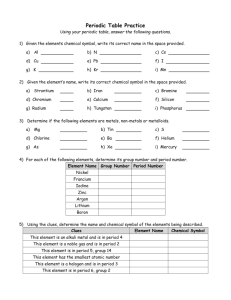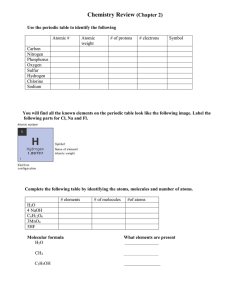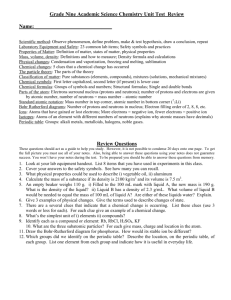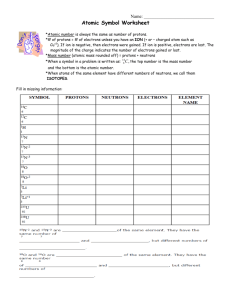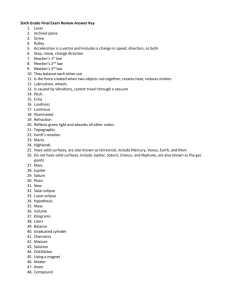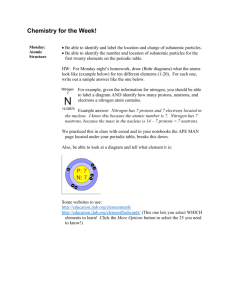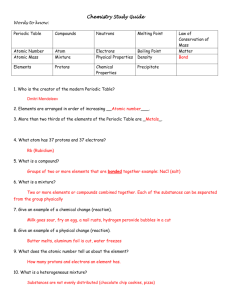Science Practice Test: Elements, Compounds, and Properties
advertisement
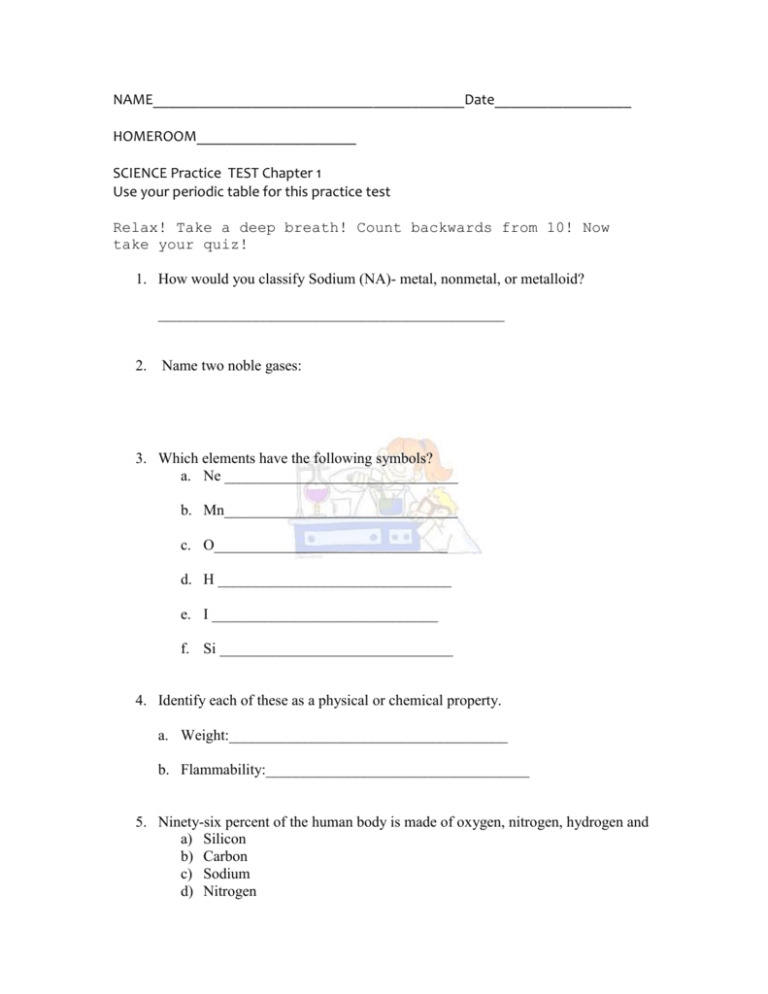
NAME_________________________________________Date__________________ HOMEROOM_____________________ SCIENCE Practice TEST Chapter 1 Use your periodic table for this practice test Relax! Take a deep breath! Count backwards from 10! Now take your quiz! 1. How would you classify Sodium (NA)- metal, nonmetal, or metalloid? ______________________________________________ 2. Name two noble gases: 3. Which elements have the following symbols? a. Ne _______________________________ b. Mn_______________________________ c. O_______________________________ d. H _______________________________ e. I ______________________________ f. Si _______________________________ 4. Identify each of these as a physical or chemical property. a. Weight:_____________________________________ b. Flammability:___________________________________ 5. Ninety-six percent of the human body is made of oxygen, nitrogen, hydrogen and a) Silicon b) Carbon c) Sodium d) Nitrogen 6. Which metal is liquid at room temperature? a) Nickel b) Mercury c) Copper d) Gold 7. What is the chemical symbol for the element Iron? ________________ 8. What does the number on top of the Chemical Symbols in each block of the periodic table mean? ______________________________ 9. The ________________________of an object measures the amount of matter in the object. (weight, mass) 10. The _________________________of an object measures the pull of gravity on the object. (weight, mass) 11. Elements in the __________________________table are organized according to their chemical properties. (element, periodic) 12. Two different compounds can contain the same ________________. (elements, molecule) 13. All salts can form_______________. (cubes/crystals) 14. The compounds in a _____________ are not chemically combined. (solute, mixture) 15. One property of most salts is that they melt at _______________ ______________________. (high temperatures, low temperatures) 16. Two atoms that have the same number of protons must be the same ____________________. (element, molecule) 17. What is the atomic number of Mercury?_________ What does this number mean? 18. How are atoms and molecules related? 19. How are compounds and molecules related? 20. The atoms of an element have 7 protons, 7 neutrons, and 7 electrons. What is the atomic number of this element? What is the name and chemical symbol of this element? The atomic number is ______________. The name of the element is ________________________. The chemical symbol of the element is __________. 21. What does the statement, “The properties of salts are different from the properties of the elements that make them” mean? Include an example in your answer. 22. What is an alloy? Give an example of an alloy and tell why it is better than a pure metal. 23. Explain how you would separate a mixture of water, sand, salt, and iron fillings into its four component parts. 24. The atomic number of Oxygen is 8. The atomic weight (atomic mass) of Oxygen is 16. How many protons, neutrons, and electrons are in an oxygen atom? 25. Draw an atom with 2 protons, 2 electrons and 2 neutrons. Identify and label the following parts: nucleus, neutrons, protons, electrons.

